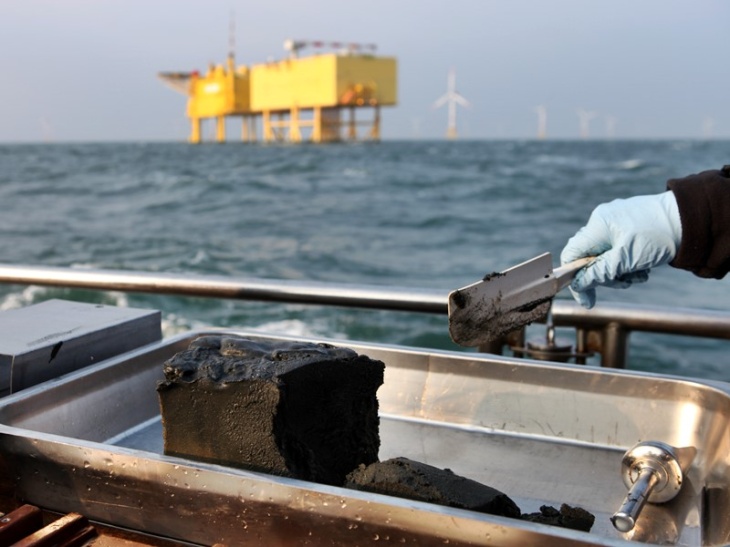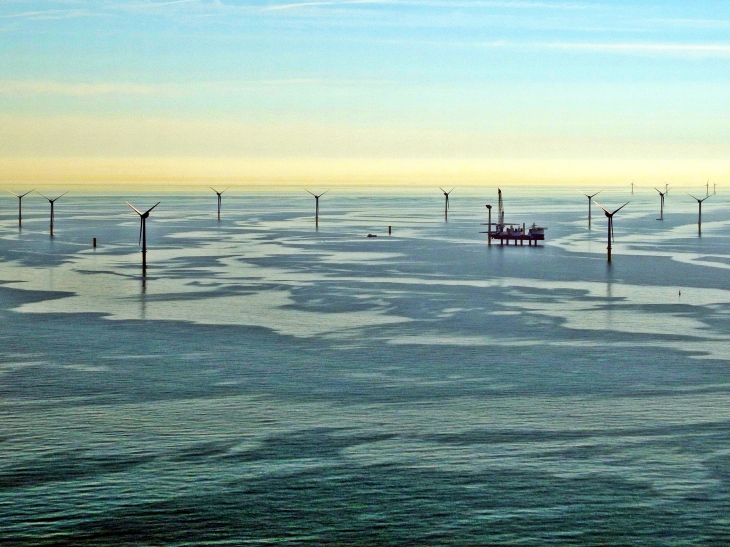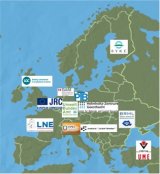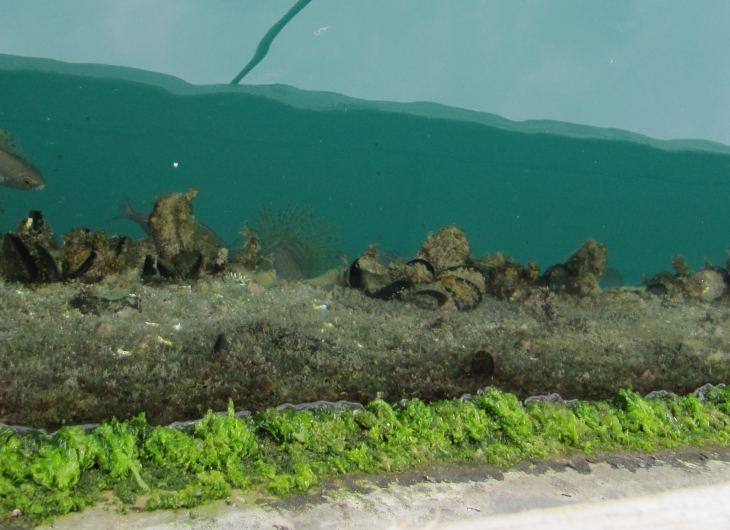Projects
PlasticTrace "Metrological traceability of measurement data from nano- to small-microplastics for a greener environment and food safety" 2022 – 2025
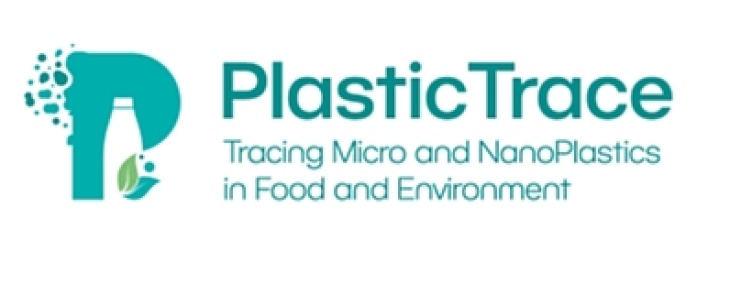
Ziel des PlasticTrace Projekts ist die Ermittlung des Bedarfs an der Entwicklung und Harmonisierung von Methoden zur chemischen Identifizierung, physikalischen Charakterisierung und Quantifizierung von freigesetzten kleinen Mikro-/Nanokunststoffen (SMPs/NPs) in Trinkwasser, Lebensmitteln und Umweltmatrices. Dieses ist einer der zentralen Forderungen des Aktionsplans für die Kreislaufwirtschaft (CEAP) der EU.
In diesem Zusammenhang werden kombinierte und komplementäre analytische Ansätze entwickelt, optimiert, verglichen und harmonisiert. Hierdurch können Messungen mit Hilfe robuster Validierung rückverfolgt werden. Im Rahmen des Projekts werden neuartige und umweltrelevante SMP/NP-Referenzmaterialien entwickelt. Die internationale Zusammenarbeit mit den wichtigsten Akteuren weltweit wird die Entwicklung eines europäischen Metrologienetzes unterstützen.
Das Hereon wird zur Entwicklung neuer Probenahme-, Fraktionierungs- und Nachweismethoden für kleines Mikroplastik in verschiedenen relevanten Matrices beitragen. Dabei werden entwickelte Methoden eingesetzt, die auf Techniken wie der Quantenkaskadenlaser-basierten FTIR-Bildgebung oder der Massenspektrometrie basieren.
Mehr Informationen
MetroPOEM "Metrology for the harmonisation of measurements of environmental pollutants in Europe" 2022 – 2025

Das Ziel des europäischen Green Deals, die Umweltverschmutzung auf Null zu reduzieren, erfordert die Entwicklung hochempfindlicher Techniken zum Nachweis kleinster Mengen von Schadstoffen und zur Bestimmung ihrer Isotopenverhältnisse. Die Massenspektrometrie ist eine Schlüsselmethode für die Bestimmung nicht-radioaktiver Schadstoffe und wird für langlebige Radionuklide immer wichtiger.
Dieses Projekt wird die Lücke zwischen beiden Methoden schließen und neue Instrumente für die Rückverfolgung von Schadstoffen schaffen. Messunsicherheiten und Nachweisgrenzen werden mit Hilfe neu entwickelter Referenzmaterialien und SI-rückführbarer Messverfahren erheblich reduziert, was sich unmittelbar auf die Verfolgung von Schadstoffquellen mit handelsüblichen Massenspektrometern auswirken wird.
Hereon wird die Entwicklung neuer empfindlicher Methoden für die Quantifizierung von umweltkritischen Elementen wie Cr, Cd, Ni, Sb oder Pb in verschiedenen natürlichen Gewässern wie Meerwasser unterstützen. Darüber hinaus ist Hereon an der Entwicklung eines neuen zertifizierten Referenzmaterials für anorganische Schadstoffe in Meerwasser beteiligt. Solche Materialien sind zwingend erforderlich, um die Genauigkeit von Analysemethoden zu validieren und um Datenreihen aus verschiedenen Studien rückverfolgbar und vergleichbar zu machen, was insbesondere für langfristige Umweltuntersuchungen unerlässlich ist.
Mehr Informationen
Anemoi "Chemical emissions from offshore wind farms: Assessing impacts, gaps and opportunities" 2023 – 2026

Das Interreg-Nordseeprojekt "Anemoi" untersucht die chemischen Emissionen von Offshore Windparks (OWP) und ihre Auswirkungen auf marine Ökosysteme und Aquakultur. Die Auswirkungen von OWPs auf die Meeresumwelt der Nordsee werden routinemäßig im Hinblick auf die Bildung neuer Lebensräume, Unterwasserlärm oder den Ausschluss der Fischerei überwacht. Die potenziellen chemischen Emissionen mit gelösten und partikulären Schadstoffen aus den Windkraftanlagen, z. B. aus den Korrosionsschutzsystemen, ist jedoch noch weitgehend unbekannt. Anemoi verfolgt folgende Ziele: (1) Identifizierung relevanter chemischer Emissionen bekannter und unbekannter Schadstoffe aus OWPs, (2) Bewertung der Auswirkungen auf Ökosysteme und Aquakulturaktivitäten, (3) Überprüfung geltender Vorschriften und (4) Vorschlag von Lösungen und Möglichkeiten zur Verringerung chemischer Emissionen aus OWPs.
Das internationale Konsortium besteht aus Partnern aus Belgien (EV ILVO , RBINS, POM West-Vlaanderen, Universität Antwerpen), Norwegen (SINTEF Ocean), Dänemark (DTU Wind), den Niederlanden (NIOZ), Frankreich (Ifremer) und Deutschland (BSH, Hereon, TU Braunschweig).
Poster Anemoi Projekt
CTM-Elbe “Contaminant transport modelling in the Elbe river” 2022 – 2025
CTM-Elbe (Contaminant transport modelling in the Elbe river) ist ein Forschungsverbundprojekt der Bundesanstalt für Wasserbau (BAW) und dem Helmholtz-Zentrum Hereon. Ziel dieses Projektes ist die Weiterentwicklung der bereits bestehenden numerischen Methoden zur 3D-Simulation der Transportwege und –mengen von elbrelevanten Schadstoffen wie Schwermetallen (Cadmium, Quecksilber, Kupfer und Zink) Pestiziden (Dichlordiphenyltrichlorethan (DDT) und Metabolite (DDD, DDE), Hexachlorbenzol (HCB)) oder Industriechemikalien (Polychlorierte Biphenyle (PCB‘s)). Für die Weiterentwicklung dieser Methoden soll eine solide Datengrundlage in Bezug auf die Partitionierung der Schadstoffe zwischen den verschiedenen Elbkompartimenten geschaffen werden. Solche 3D Simulationen helfen beispielsweise bei der Genehmigung von Umlagerungsmaßnahmen im Rahmen der Unterhaltung der Fahrrinne der Tideelbe insbesondere in Bezug auf die Umsetzung der Wasserrahmenrichtlinien (WRRL) und der Meeresstrategie-Richtlinien (MSRL) in der Zukunft. Mit steigendem Umweltbewusstsein wird auch die Relevanz von präzisen Vorhersagen von möglichen Schadstoffverteilungen durch Maßnahmen im Bereich des Sedimentmanagements immer wichtiger.
Die Abteilung Anorganische Umweltchemie des Institutes für Umweltchemie des Küstenraumes am Helmholtz-Zentrum Heron wird Methoden zur Analyse der Schadstoffe in den unterschiedlichen Kompartimenten der Elbe mittels ICP-MS/MS und GC-MS/MS beisteuern sowie Laborversuche planen und durchführen und die Konzeptionierung von Kampagnen zur Beprobung der Elbe ausarbeiten. Die in diesem Zuge ermittelten Daten werden zu Datensätzen verarbeitet, um eine Weiterentwicklung der bereits bestehenden numerischen Methoden zu präziseren 3D-Simulationen in enger Zusammenarbeit mit der BAW zu gewährleisten und zu validieren.
RETAKE „CO2-Entnahme durch Alkalinitätserhöhung: Potenzial, Nutzen und Risiken“ 2021 – 2024
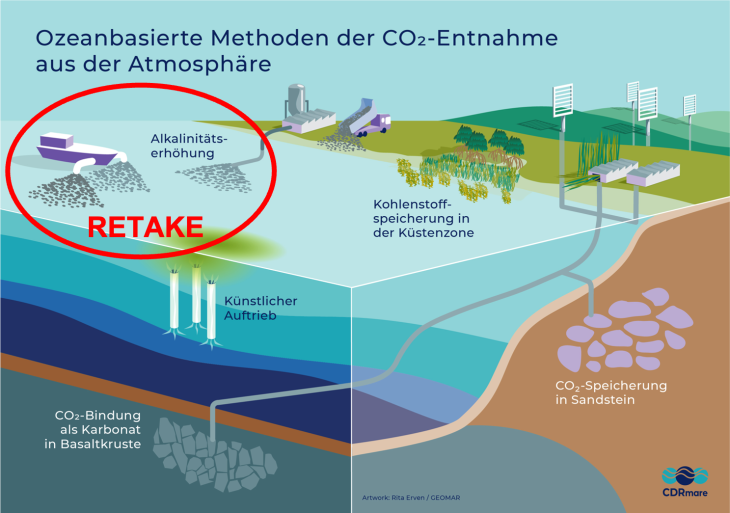
Grafik: Stellung des Forschungsverbundes RETAKE innerhalb der Forschungsmission CDRmare
RETAKE ist ein Verbund innerhalb der DAM-Forschungsmission „Marine Kohlen¬stoffsenken in Dekarbonisierungspfaden“ (CDRmare) und untersucht das Potential, die Durchführbarkeit und die möglichen Nebeneffekte der marinen Alkalinitätserhöhung (AE). Eine Erhöhung der Alkalinität – des Puffervermögens von Wasser gegenüber Säuren – resultiert in einer langfristigen Speicherung von CO2 in den Ozeanen, während gleichzeitig der derzeit zunehmenden Ozeanversauerung entgegengewirkt wird. Dafür wird unter Anderem der natürliche Prozess der Silikatverwitterung künstlich beschleunigt, der sonst auf Zeitskalen von Tausenden von Jahren das Klima auf der Erde wieder abkühlt. Insgesamt handelt es sich bei AE um eine climate engineering-Methode, die auf zuverlässige und nachhaltige Weise den Klimawandel und seine Folgen abmildern könnte.
Die Abteilung für Anorganische Umweltchemie wird im Rahmen dieses Projekts mit Hilfe von Element-Fingerprinting und nicht-traditionellen stabilen Isotopen eine Identifizierung der Quelle von Alkalinität anstreben. Ziel ist dabei der Nachweis der zusätzlichen Alkalinität vor den stark schwankenden natürlichen Alkalinitätslevels in Nord- und Ostsee. Zudem wird die Freisetzung von Schwermetallen untersucht werden, die sich als mögliche Nebenwirkung negativ auf Ökosysteme auswirken könnte. Für ein umfassendes Bild und eine ganzheitliche Bewertung der Methode werden eigene Verwitterungsversuche mit Olivin durchgeführt werden, sowie Proben aus Experimenten von RETAKE-Partnern und Umweltproben von Nord- und Ostsee gleichermaßen analysiert werden.
mehr Informationen
H2Mare 2021 – 2025
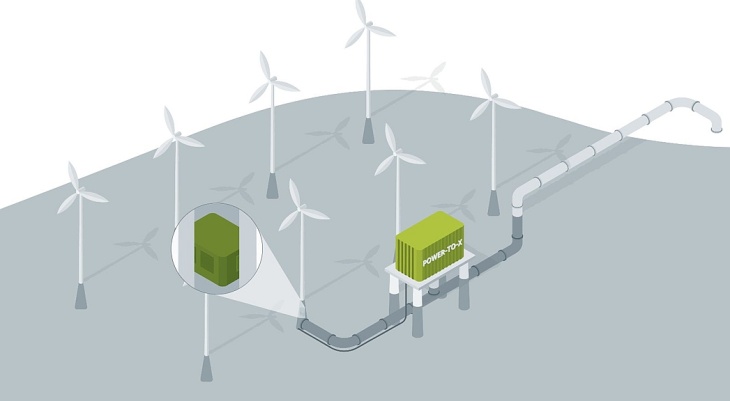
Grafik: Projektträger Jülich im Auftrag des BMBF
H2Mare ist eines von drei Wasserstoff-Leitprojekten, die vom Bundesministerium für Bildung und Forschung (BMBF) mit insgesamt bis zu 740 Millionen Euro gefördert werden. Bei H2Mare wird innerhalb von vier Jahren gemeinsam mit rund 32 Partnern aus Wissenschaft und Industrie die Erzeugung von grünem Wasserstoff und Folgeprodukten mit Offshore-Windkraft untersucht. Mit vier seiner Institute unterstützt das Helmholtz-Zentrum Hereon die Technologieentwicklung für eine nachhaltige und umweltfreundliche Energieproduktion.
Das Institut für Umweltchemie des Küstenraumes bringt vor allem chemisch-analytisches Wissen zur Untersuchung von Schadstoffen in marinen Umweltproben ein und hilft so, mögliche Emissionen der Offshore-Plattformen, wie (Schwer-)Metalle oder organische Schadstoffe, frühzeitig zu benennen. Im Laufe des Projektes soll ein Monitoringkonzept für potentielle Emissionen aus der Offshore-Produktion von Wasserstoff und Power-to-X-Folgeprodukten (z.B. Methanol oder Ammoniak) entwickelt werden um so eine Aussage über die Umweltauswirkungen dieser Anlagen machen zu können.
mehr Informationen
P-LEACH "Impacts on ecosystem functions and human health by environmental plastics and associated chemicals" 2022 – 2024
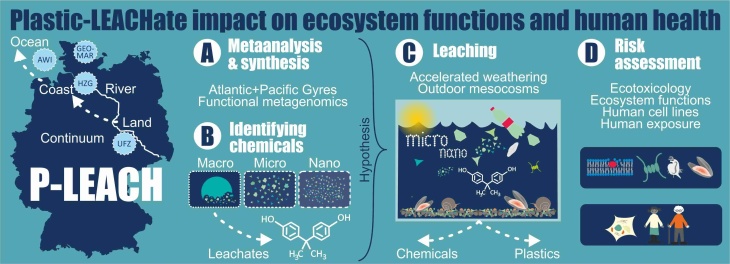
Graphical abstract of P-LEACH (Annika Jahnke/UFZ)
P-LEACH bewertet die Auswirkungen von Chemikalien aus der weltweit zunehmenden Verschmutzung der Umwelt durch Kunststoffe. Dabei wird der Einfluss auf Ökosystemfunktionen und die menschliche Gesundheit betrachtet. Kunststoffe stellen als neuer Besiedlungsraum ("Plastisphäre") einen neuen Lebensraum dar, in dem Verwitterung zur Fragmentierung und Auswaschung von Chemikalien, einschließlich schädlicher Zusatzstoffe (z. B. Weichmacher, Bisphenole, Metalle), führt.
Ein multidisziplinäres Konsortium charakterisiert diese Schadstoffe und ihre synergetischen Auswirkungen auf die Ökosystemfunktionen mit starkem Fokus auf mikrobielle geochemische Zyklen in realitätsnahen aquatischen Umgebungen entlang des Land-Küsten-Ozean Kontinuums und Hot Spots der Deutschen Bucht, dem Nordatlantik und im Bereich Nordatlantischer und Pazifischer Wirbel (Lyngøyne, Norwegen). Das Projekt befasst sich außerdem mit den Auswirkungen auf die menschliche Gesundheit unter Verwendung menschlicher Zelllinien und menschlichen Gewebes.
Die Abteilung wird die Untersuchungen u.a. durch die Identifizierung charakteristischer anorganischer Additive in verschiedenen Feldproben und künstlich verwitterten Materialien mittels ICP-MS(/MS), LA-ICP-MS und HPLC/GC-ICP-MS und die Durchführung statistischer Analysen zur Identifizierung charakteristischer Muster, um so Verteilung und Verbleib von Kunststoffen in der limnischen/küstennahen/marinen Umwelt zu bewerten.
mehr Informationen
MetroCycleEU Projekt "Metrology for the recycling of technology critical elements to support Europe’s circular economy agenda" 2021 – 2024

MetroCycle Logo
Das MetroCycleEU Projekt wurde etabliert, um die repräsentative, auf SI rückführbare Bestimmung von TCE im µg/g-Bereich in urbanen Elektroschrott zu ermöglichen. Hierzu sollen im Laufe des Projekts vor allem übertragbare Analysemethoden und geeignete Referenzmaterialen geschaffen werden, um zur Verbesserung des Recyclings von TCEs im Rahmen der Kreislaufwirtschaft beizutragen.
In enger Zusammenarbeit mit 14 Partnern aus ganz Europa wird Hereon im Rahmen dieses Projektes bei der Entwicklung neuer, schneller und zuverlässiger Analysemethoden sowie bei der Konzeptionierung von Probenahme und –Vorbereitung Strategien beitragen. Die so gewonnenen Erkenntnisse können anschließend in den jeweiligen Kreislaufwirtschaften genutzt werden um zum einen den wirtschaftlichen Wert urbanen Elektroschrotts zu bestimmen und zu anderen um über Recyclingrouten zu entscheiden oder neue Recycling und Umweltverträglichkeitsprüfung zu entwickeln.
mehr Informationen
CARBOSTORE Projekt "Carbon Storage in German Coastal Seas – Stability, Vulnerability and Perspectives for Manageability" 2021 – 2024
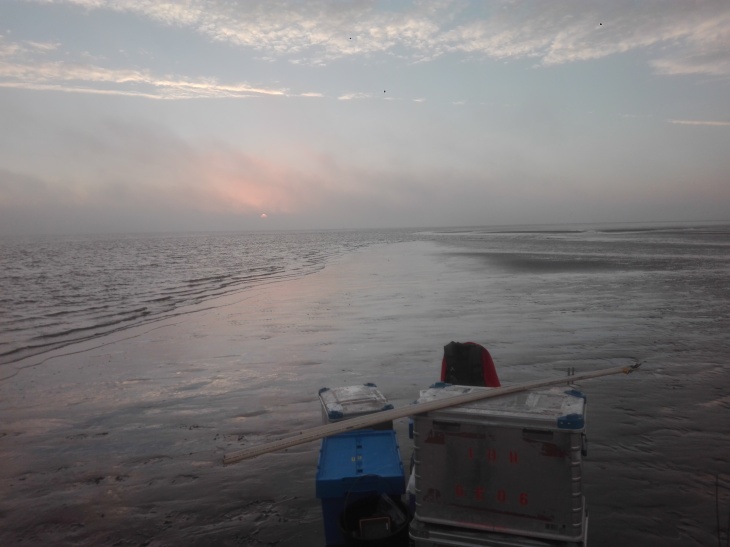
Probenahme morgens auf dem Janssand (Foto: Anna Przibilla/Hereon)
CARBOSTORE (Carbon Storage in German Coastal Seas – Stability, Vulnerability and Perspectives for Manageability) ist ein vom Bundesministerium für Bildung und Forschung (BMBF) gefördertes Verbundprojekt im Forschungsprogramm „MARE:N – Küsten-, Meeres- und Polarforschung für Nachhaltigkeit“ unter dem Dach des Forschungsrahmenprogramms „Forschung für Nachhaltige Entwicklung“ (FONA). Hauptziel von CARBOSTORE ist die Untersuchung der Stabilität und Verwundbarkeit verschiedener Kohlenstoffspeicher in den deutschen Nebenmeeren Nord- und Ostsee. Ausgehend von den Ergebnissen sollen Perspektiven entwickelt werden, die die gezielte Erhöhung der Kohlenstoffspeicherung in Nord- und Ostsee, d.h., netto negative CO2-Emissionen, zum Ziel haben.
Die Abteilung Anorganische Umweltchemie ist im Arbeitspaket 2 zuständig für die Beprobung und Messung von redoxaktiven und toxikologisch relevanten Metallen in Porenwasser, Sediment und der darüber liegenden Wassersäule. In Zusammenarbeit mit der Abteilung Aquatische Nährstoffkreisläufe soll festgestellt werden, wie biotische und abiotische Umsetzungs- und Remineralisierungsprozesse die im Sediment vorhandenen Schwermetalle mobilisieren. Daraus werden der Einfluss freigesetzter Metalle auf die biotischen Umsetzungsprozesse (Ammonifikation, Nitrifikation, Denitrifikation) und die Flüsse der freigesetzten Metalle in die Wassersäule quantifiziert.
mehr Informationen

